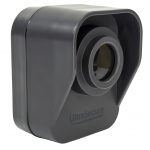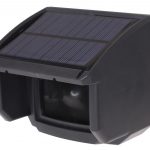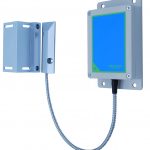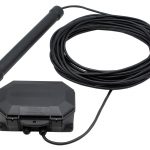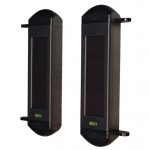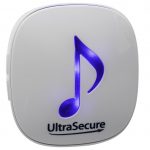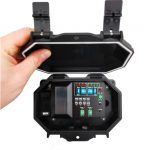Most modern Wireless Driveway Alarms & Alerts are in general a low Maintenance device, but they do benefit from some occasional TLC.
Most people will use them and only think of any basic maintenance when they realize they are not working, it could be too late by this stage as you may have already had Visitors or Intruders without knowing.
There are some very basic maintenance jobs that could be done a couple times of year to make your products more reliable, the most common times to do this would be leading into and coming out of ‘Winter’.
Detectors:
Battery PIR’s
Jobs to do include:
- Check or replace the Batteries.
- Check the Battery connectors, it my help to clean them us using a suitable cleaning Spray, if this is done please ensure the connectors are 100% dry before using again.
- Clean the PIR (perhaps using warm soapy water), especially the front lens area.
- Ensure no shrubbery has grown over the Detection view.
- Ensure the PIR is still mounted in the correct position and angle.
- Ensure the Wireless Signal is working back to the relevant Receiver/Receivers.
Solar PIR’s
Jobs to do include:
- Clean the Solar Panel (using warm soapy water if possible).
- Give the PIR a top up Charge (if your model allows for this).
- Clean the PIR, especially the front lens area.
- Ensure no shrubbery has grown over the Detection view.
- Ensure the PIR is still mounted in the correct position and angle.
- Ensure the Wireless Signal is working back to the relevant Receiver/Receivers.
Magnetic Gate Contacts:
- Ensure the Gate hasn’t moved (dropped, expanded or shrunk) due to weather as the Magnetic Contact Switch & Magnet need to be lined up when the Gate is Closed.
- Check the Battery (and replace if required) in the Battery Transmitter.
- Clean the inside of the Transmitter Box from Dust, Damp & Insects.
- Ensure the Wireless Signal is working back to the relevant Receiver/Receivers.
Vehicle Detecting Underground Probes:
- Check the Probe is still positioned safely & firmly underground (the probe shouldn’t move around as this would cause false alarms).
- Check the Cable that is visible (not hidden in conduit) between the Probe and Transmitter for any Damage (from vehicles or animals).
- Check the Battery (and replace if required) in the Battery Transmitter.
- Clean the inside of the Transmitter Box from Dust, Damp & Insects.
- Ensure the Wireless Signal is working back to the relevant Receiver/Receivers.
Laser Beams:
- Ensure the Beams are still lined up correctly.
- Ensure the mounting Posts & Brackets are still in good condition, if these move in a strong wind the Beams could become unaligned, which unlike PIR’s will make them inactive (after the initial activation as the Beams move).
- If the Beams are Solar powered, clean the relevant Solar Panels (using warm soapy water if possible).
- If the Beams are the type that allow you to give the Batteries a boost charge, then this is a worthwhile practise running into and out of Winter.
- Ensure no shrubbery has grown over the Detection view.
- Ensure the Wireless Signal is still working back to the relevant Receiver/Receivers.
Other Transmitters:
There can be a vast array of Sensors that could be used within modern Wireless Driveway Alarms, in most applications the advice listed above would be relevant in some way to any Sensors not listed, but if you have any doubt please Contact Ultra Secure Direct for Advice !!
Indoor Receivers:
Indoor Receivers need minimal maintenance as unlike the Sensors they are not operating in the harsh outdoor environments, but some simple maintenance can be done:
- Check the connector from the Power supply (unless the receiver plugs directly into the socket).
- Check any Input or Output connections going into the Receiver for wear (if relevant).
- Check the connection on any accessories that are connected to the Receiver (for example Buzzers, Diallers, Bells & Sirens).
- Lightly clean the Receiver if it is located in a workshop type environment.
Outdoor Receivers:
The new breed of Outdoor Receivers are great for activating Lights, Sirens & Bells which notify you to the presence of a Visitor (friend or foe) whilst you are outside, together with letting the Visitor know they have been Detected, these will benefit from a bit of maintenance:
- Check the Power Supply and connections.
- Check all connections to the accessories being used.
- Clean the Inside of the Receiver.
- Clean the Outside of the Receiver.
- Ensure the Wireless signals are being received by the relevant Transmitters.
Testing:
After carrying out the basic maintenance, we would recommend someone triggering each Sensor whilst the relevant Receiver is monitored for correct functionality, different types of Sensors will need to be triggered in different ways, examples being:
- PIR’s: Walk or Drive past each PIR (whichever is more relevant to your application).
- Gate Contacts: Open each Gate from a closed position.
- Vehicle Probes: Drive Past the Probe with a Vehicle (or by using a suitable alternative steel object).
- Laser Beams: Walk or Drive past each set of Beams (whichever is more relevant to your application).
Repeat the process for additional Receivers being used within the Alarm/Alert System.
Damp:
If any of the Outdoor Transmitters or Detectors are not working during these tests, or are being inconsistent it may be possible that damp has worked its way into the circuitry as they can be working in the most challenging of conditions at times, with rain, snow, wind, frost & sun all playing a part during the year.
In these situations it is quite often possible to remedy the situation by the following method, if you have basic DIY skills, we would recommend:
- Removing the Battery (unless solar powered).
- Take the Transmitter into a warm and dry building (with a view to it staying there for 24/48 hours).
- Carefully Open up the Transmitter (if the model you have allows this), it normally involves removing screws.
- Once opened up, library spray WD-40 (or similar) over all of the Board & Battery connections.
- Allow the device to Fully Dry, let the WD-40 evaporate.
- Put back together and Test.
- This will very often cure problems cause by Damp.
Snow:
In the event of Snow conditions it is important to wipe the Detector Lens on all Detectors, if you are using Solar powered Detectors then ensure the Solar Panels are cleared of any Snow & Ice. If the conditions are resulting in a prolonged covering of Snow or Ice then we would recommend using a de-icer spray on the Solar Panels (to ensure correct charging).
Visit and give us your thoughts on our other Blogs !!

